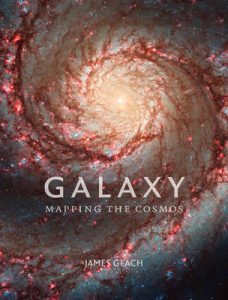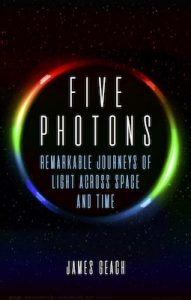
Dr James Geach
Astrophysicist / Writer
@jgeach
orcid.org/0000-0003-4964-4635
j.geach at herts.ac.uk.
Centre for Astrophysics Research, School of Physics, Astronomy & Mathematics, University of Hertfordshire, Hatfield, Hertfordshire, AL10 9AB, United Kingdom
Author at cyber-sport.io
About me and my research
I am a Royal Society University Research Fellow and Reader in Astrophysics based in the Centre for Astrophysics Research (CAR) at the University of Hertfordshire. I studied Physics at Imperial College London as an undergraduate, and then did my Ph.D. at Durham University under the expert tutelage of Ian Smail. After completing my thesis, I was a post-doc at Durham and Banting Fellow at McGill University before coming to CAR in 2013.
My research generally focuses on the formation and evolution of galaxies and observational cosmology, but I also investigate novel uses of machine learning in astrophysics and explore the application of these techniques in other fields, including medicine, agriculture, gaming. I like to dabble.
For a complete record of my research, you can find an up-to-date listing of publications and pre-prints at the NASA Astrophysics Data System. You can also read about some of my research in the press:
Galactic blow out
Lyman Alpha Blobs: Galaxies Coming of Age in Cosmic Blobs
Herschel Sees Intergalactic Bridge Aglow With Stars
Galaxy Goes Green in Burning Stellar Fuel
Astronomers Map Dark Matter Throughout the Entire Universe
Writing

Galaxy: Mapping The Cosmos
Galaxy is published by Reaktion Books (2014) and has been translated into several languages, including Arabic, Chinese, Japanese, Korean, Russian and Turkish.
My bookspot:
Some praise for Galaxy:
Astrophysicist Geach goes an order of magnitude further than the usual popular astronomy title – those full of breathtaking images, but little in the way of context – by giving readers the fascinating stories revealed by those images: how galaxies are created, how they evolve, and what they tell us about our universe. The sheer variety is stunning: ‘grand design’ spirals like our Milky Way; barred spirals; irregular and amorphous galaxies with no discernible structure; dynamic interacting and colliding galaxies where new stars form like popcorn; and quasars, ancient, distant galaxies whose central black holes spew copious amounts of x-ray, ultraviolet, and visible radiation. Living in the Milky Way gives us an insider’s view of a typical spiral galaxy, with its broad disc of stars surrounding a bulge or hub of older stars cloaking a supermassive black hole. Geach explores the technology behind modern big telescopes—as well as their instrumentation and techniques—that scientists use to study galaxies as they determine what they’re made of, how much is unknown dark matter, and how fast they’re receding away from us in our expanding universe. Gorgeous color photos, coupled with clear and engaging explanations of the science behind them, make this book a winner on every level.
Book of the Month… Galaxy: Mapping the Cosmos is a beautifully illustrated exploration of the Universe beyond the Milky Way, and the mysteries and wonders of extragalactic astronomy. Geach is ideally placed to be our guide on this journey – a researcher in the fastchanging field of galaxy evolution, he displays both breadth and depth of knowledge, happily matched by a talent for engaging, nontechnical prose and an eye for a simile… [Galaxy] is an enthralling, detailed and beautiful look at one of the most challenging and exciting areas of modern astronomy, and a great addition to any enthusiast’s library.
Sky At Night Magazine
An excellent guide to a world many of us never get to see, both on and off this planet.
Focus Magazine
James Geach is actively researching on one of the most exciting frontiers of today’s science: extragalactic astronomy. His book conveys his personal enthusiasm, and offers a clear and highly readable survey of the field’s progress and prospects.
Professor Martin Rees FRS, Astronomer Royal, Institute of Astronomy, Cambridge
Dr Geach brings his personal experience to the fore in describing the latest discoveries in this rapidly developing field of cosmology and galaxy evolution . . . I highly recommend this book for those wanting to share in the excitement of modern astronomy.
Professor Richard Ellis FRS, California Institute of Technology
Galaxies are the building blocks of the Universe. But they are dynamic blocks that have changed and evolved throughout the 13 billion years since their seeds – sown at the very instant of the Big Bang – began to grow. Their trials and tribulations are recounted with great clarity in this short, accessible, yet deep and comprehensve book. What are galaxies made of, why do they have different sizes, luminosities and morphologies, how have they managed to grow gigantic black holes in their midst, all these questions are posed – and answered as far as current knowledge permits – in an engaging and absorbing way by James Geach. As a practising professional astronomer at the cutting edge of galaxy research, Geach has managed to convey the vibrancy and excitement of research at the very forefront of human knowledge.
Professor Carlos Frenk FRS, Director of the Institute for Computational Cosmology, Durham University

Five Photons: Remarkable Journeys of Light Across Space and Time
Galaxy is published by Reaktion Books (2014) and has been translated into several languages, including Arabic, Chinese, Japanese, Korean, Russian and Turkish.
Some praise for Five Photons:
Light illuminates cosmic origins and decodes quotidian realities. But what is it? This deft primer by astrophysicist James Geach captures the elusive electromagnetic wave in five processes. His meditation on ‘old’ light takes us back to the singularity: the “cosmic seed” that expanded into the Big Bang. A study of starlight plunges us into the seething stellar surface. We peruse dark energy, radio waves and quasars – beacon-like galaxies in which supermassive black holes feed off interstellar gas and release vast amounts of energy. A masterclass in elucidating hard science with elegance and brevity.Nature
Geach’s beautiful cosmic biography takes readers on a sweeping tour of all that was, is, and ever will be. Five Photons is as elegant as it is enlightening.Lee Billings, author of Five Billion Years of Solitude
With his elegant, supremely clear writing, Geach has succeeded at creating both a state-of-the-art cosmic overview and a rather wonderful meditation on the nature of our reality.Caleb Scharf, author of The Zoomable Universe